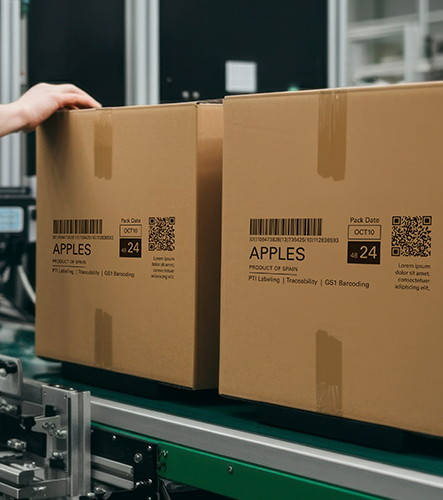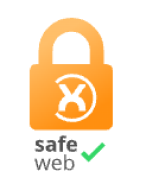Industrial coding systems allow products to be accurately identified and managed throughout the supply chain, facilitating inventory management, regulatory compliance, and customer satisfaction.
In this article, we explain in detail what product coding is, the most common types, and how to implement them in your production lines to improve operational efficiency.
What is product coding?
Product coding is the process of assigning a unique identifier to each product or batch as it moves down the production line. This can be achieved through the use of numeric codes, alphanumeric codes, barcodes or more advanced systems, such as QR codes. Coding allows products to be easily tracked and managed throughout the entire production and distribution process, which is crucial for maintaining traceability and complying with quality regulations.
On industrial production lines product coding ensures that each item is correctly identified, reducing the risk of errors and facilitating process automation. Coding systems such as those offered by United Barcode Systems, such as the TJX Series for individual products or the APLINK Series for case coding, are advanced solutions that ensure accuracy and reliability in coding.
Product Coding Types and Standards
Numerical coding
Numerical coding assigns unique numbers to products or batches, allowing for basic tracking. It is one of the simplest forms of coding and is used when you don’t need to store a lot of information in your code. This method is effective for inventory management in industries where simple, readable identifiers are required.
Alphanumeric coding
Alphanumeric coding uses a combination of letters and numbers to identify products. This type of coding is more flexible than numerical encoding as it allows more information to be stored, such as product-specific features or manufacturing details. It is widely used in the pharmaceutical and electronic components, industry, where further customization in codes is required.
Barcode
Barcode is one of the most popular and versatile coding systems. It uses a series of vertical lines of varying thicknesses to represent data that can be quickly read by a scanner. This type of coding is essential in production lines for consumer products and supports a wide range of industrial applications, from inventory management to logistics control. United Barcode Systems’ APLINK Series is an excellent solution for printing barcodes on boxes, ensuring accuracy and readability.

Example of barcode encoding with the APLINK MRX72e equipment.
RFID (Radio Frequency Identification)
RFID allows for product tracking through the use of electronic tags that transmit information via radio waves. Although, it is an advanced and useful technology in some sectors. However, in some industrial applications where large-scale warehouse tracking is needed, RFID may be considered.
QR code
The QR code is a two-dimensional code that stores more information than a traditional barcode. It can be easily scanned using mobile devices, making it useful in both the industrial environment and commercial applications. QR codes are ideal for quickly accessing data about the product, such as instructions for use or technical information. Solutions such as the UBS TJX Series enable accurate QR code printing on small, fast-moving products.
For the coding of boxes, sacks, packaging, and packs, our APLINK Series offers an advanced solution that ensures accurate and long-lasting QR code printing. Thanks to its ability to operate in high-volume production environments, the APLINK is perfect for direct printing on porous and non-porous surfaces, ensuring that QR codes remain legible and easily scannable throughout the supply chain.

Example of QR code encoding with the APLINK LCXe equipment.
NFC (Near Field Communication)
NFC allows for short-distance data transmission between enabled devices. This technology is popular in consumer applications, such as contactless payment and can be considered for specialized uses in the retail industry.
Coding using emerging technologies
Emerging technologies such as blockchain or Internet of Things (Iot) are gaining ground in product coding, especially in sectors where immutable traceability is required.
Implementation of coding systems in production lines
Needs and Objectives Assessment
The first step in implementing a coding system is to conduct a detailed assessment of the company’s needs and goals. It is necessary to identify what information needs to be coded and how this system will be integrated into existing production processes. Factors such as product type, production volume, and regulatory requirements must be considered.
Selecting the right technology
Once the needs have been assessed, it is crucial to select the right coding technology. Companies should consider whether they require a barcode system, QR, or a more advanced solution such as the TJX Series for products or the APLINK Series for boxes.
The chosen technology must meet the requirements for precision, speed and durability needed in the production line.
Ideally, a team of specialists should advise you according to your needs, providing you with the most appropriate equipment according to your case.
System planning and installation
Planning and installing a coding system requires careful integration into production lines. It is essential to ensure that the system is set up to operate efficiently, with coding points strategically placed on the production line to minimize disruptions.
Staff training
Staff training is critical to the success of any coding system. Operators should be familiar with the operation of the system, including basic maintenance and troubleshooting procedures. This ensures that the system is operating optimally, and that issues can be resolved quickly.
System maintenance and upgrade
Regular maintenance and updating of the system are key to ensuring its long-term operation. It is important to carry out regular checks of equipment to avoid unplanned stops in production and ensure that codes remain accurate and legible.
Benefits of Product Coding and Labeling Systems
Improved inventory management
A well-implemented coding system allows for a significant improvement in inventory management, as it makes it easier to track products at every stage of the production and distribution process. This helps reduce stock errors and optimizes real-time inventory control.
Increased accuracy and efficiency
Accuracy in coding is key to minimizing errors in production. With solutions like the TJX Series and APLINK Series, companies can ensure that each product is correctly identified, reducing the risk of coding errors and improving operational efficiency.
Reduced errors and costs
Automatic coding systems help reduce human error, which in turn decreases the costs associated with returns, inventory corrections, and defective production. By minimizing errors, companies can improve the profitability of their operations.
Facilitating tracking and traceability
Traceability is essential in regulated industries such as pharmaceuticals and food. Coding systems allow for complete tracking of products, ensuring that their origin and journey can be traced in the event of product issues or recalls.
Improved customer satisfaction
Correct coding and labeling not only improves internal processes, but also increases customer satisfaction by ensuring that products arrive on time and with the correct information. This builds trust in the brand and improves the end-customer experience.
At United Barcode Systems (UBS) owe offer advanced solutions for labeling, coding, and marking on production lines. Our equipment, such as the TJX Series for individual products, the APLINK Series and APL 35s for boxes, and the APL Series for pallet coding, is designed to integrate efficiently into high-demand environments. These systems ensure accurate and reliable coding, improving traceability and optimizing inventory management.
Our solutions are tailored to the specific needs of each industry, offering versatility, precision and durability. Contact us today to find out how our coding and labeling technologies can help you optimize your production lines and improve your company’s operational efficiency.








